A resume as a drug and alcohol counselor is one of the critical tools in your job search arsenal. Even with the difficulty of job searching in today’s market, it’s still necessary to have an effective resume to give you the best possible chance of being hired. Since you are reading this article, the chances are that you will be applying for a drug and alcohol counselor position. However, keep in mind that these tips apply to virtually any resume. The principles remain the same regardless of your target role or industry. Suppose you need help writing your resume. In that case, this article has everything you need to know about what to include and how to format your document to effectively showcase your skills, experience, education, and other pertinent information. Read on for insider tips from a professional resume writer who understands what hiring managers look for in an applicant’s resume.
Drug and Alcohol Counselor Resume Example
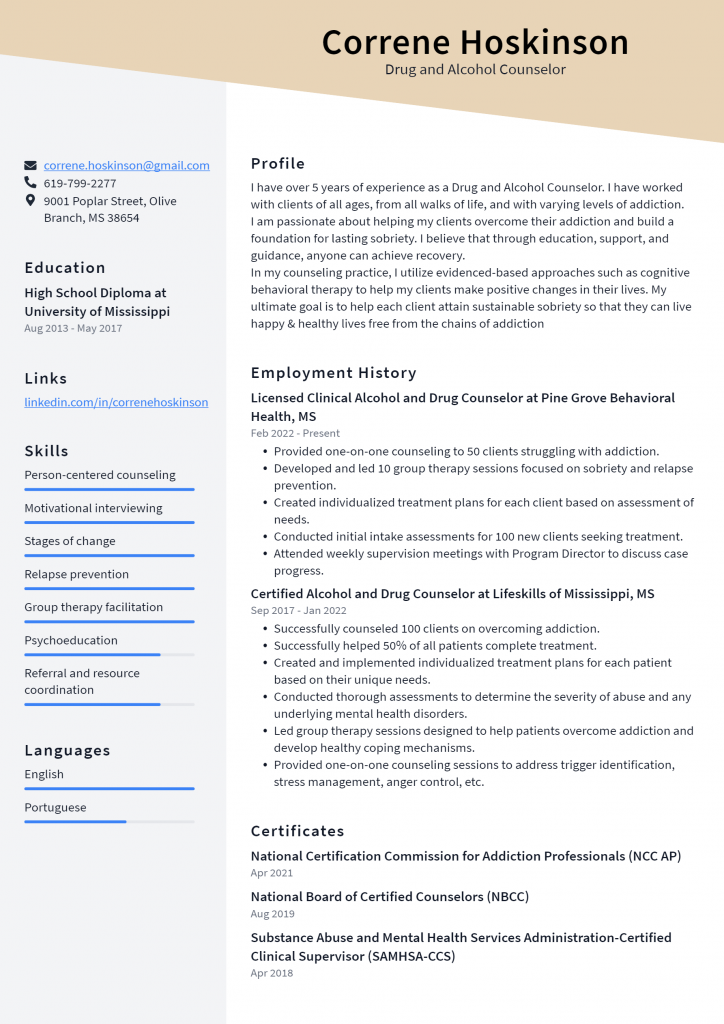
Download This Drug and Alcohol Counselor Resume as PDF
Substance Abuse Counselor Resume Example
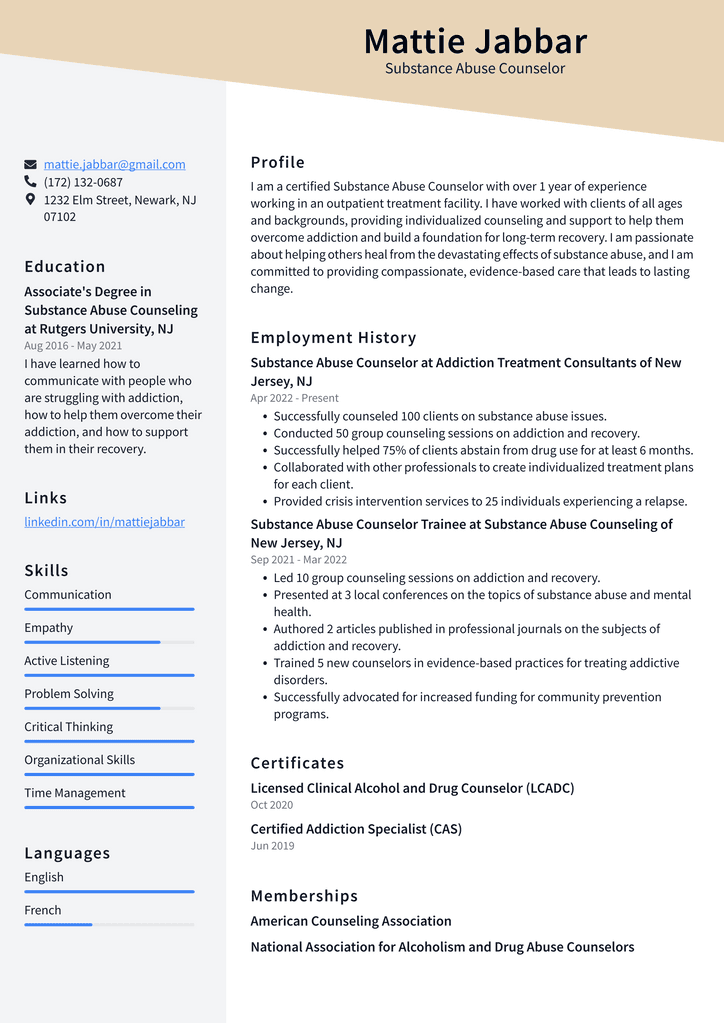
Download This Substance Abuse Counselor Resume as PDF
Substance Abuse Social Worker Resume Example
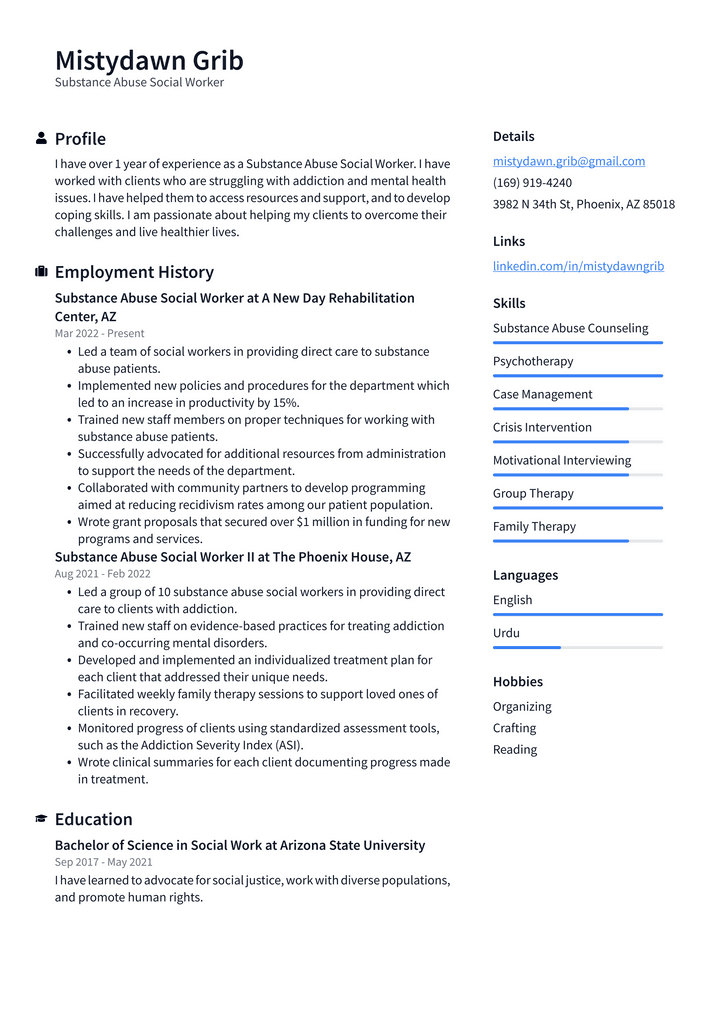
Download This Substance Abuse Social Worker Resume as PDF
Substance Abuse Case Manager Resume Example
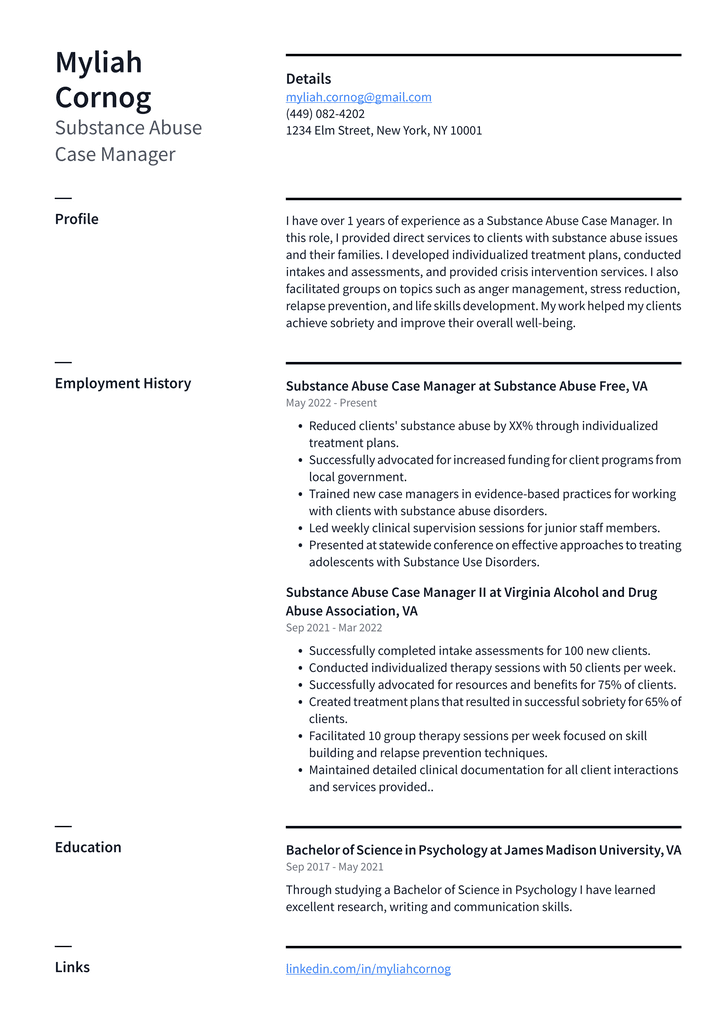
Download This Substance Abuse Case Manager Resume as PDF
Substance Abuse Psychologist Resume Example
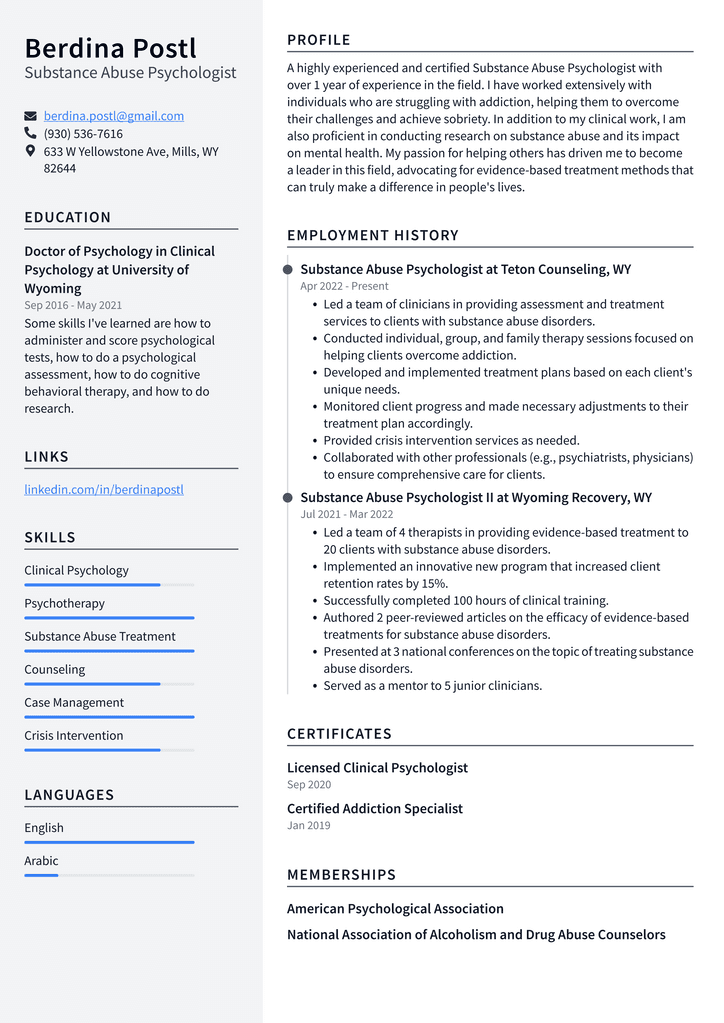
Download This Substance Abuse Psychologist Resume as PDF
Substance Abuse Nurse Resume Example
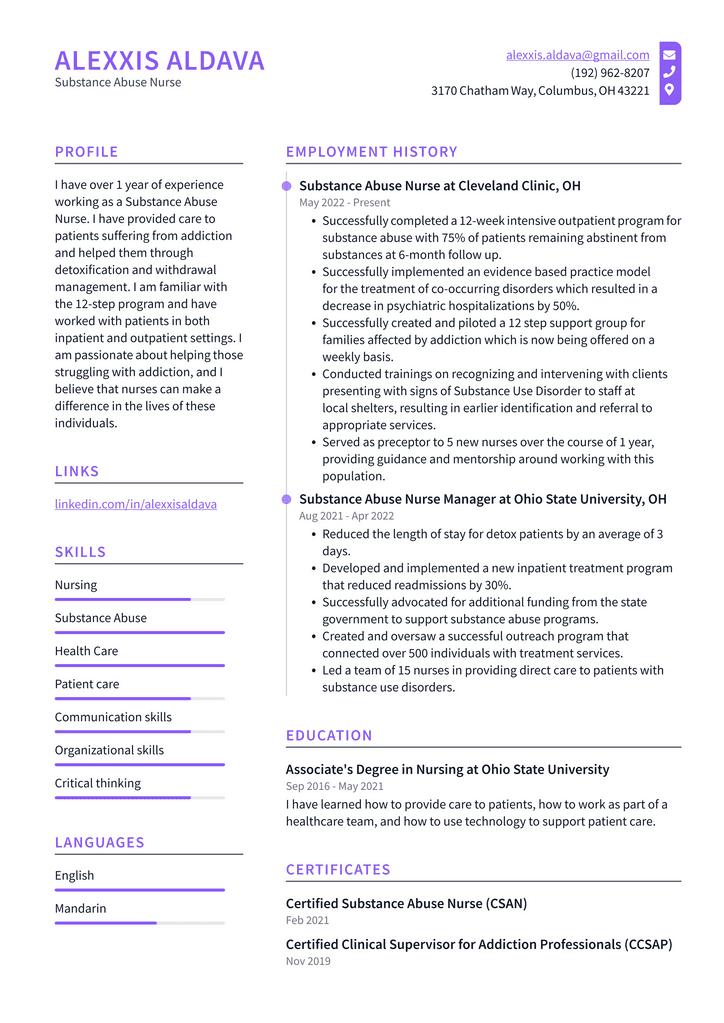
Download This Substance Abuse Nurse Resume as PDF
Substance Abuse Treatment Counselor Resume Example

Download This Substance Abuse Treatment Counselor Resume as PDF
Resume Basics
– Resume length – The general rule is to keep your resume to one page if you are in a managerial role or have an extensive work history. Entry-level positions usually have a shorter limit of one and a half pages. – Font – When it comes to the font you use, there are no hard and fast rules. However, selecting a font that is easy to read is best. The last thing you want is your potential employer to squint to read your resume. – Margins – The standard margin for a resume is one inch on all sides. – Bullets – The best advice when formatting bullets is to keep them short and sweet. Your potential employer does not have the time to read a long, drawn-out bullet point. – Sections – All resume sections are essential, but it is especially crucial to include both a skills section and an interests section. The skills section is where you can highlight your transferable skills, while the interests section is the place to show off your personality.
Many resumes include a header and footer to structure the document. This is especially helpful when printing your resume in an organization-standard format. Header – A title typically includes your name, address, and phone number. You may also want to have your email address. Footer – A footer usually consists of the name of the company you are applying to and the position being sought. If you are using multiple companies, you could also include the position being applied for at each company in the footer.
Resume template
A resume template can be a helpful tool if you are applying for many jobs and want efficiency. However, you must ensure that each of your resumes uses clean formatting and does not include any plagiarized content. You can also choose a resume template that provides resume examples. This can be helpful when you need a little extra help putting your skills and experience into words. You can easily find resume templates online. For instance, Google has a great selection of entirely customizable resume templates.
Strong action words
You want your resume to represent who you are as a person visually. Therefore, you want to ensure that your resume is packed with solid action verbs so the hiring manager can visualize you in the role. Your skills section is your best bet for using strong action words. You can also use action words in your education or experience section. Here are some action words to incorporate into your resume: Solved, optimized, exceeded, increased, managed, completed, directed, and supervised.
Summary of skills
If you are having a hard time finding a way to group your skills into a manageable list, try starting with a summary of your skills. Think about the qualities, traits, and characteristics that make you an ideal candidate for the drug and alcohol counselor position. This can help streamline your skills and better highlight why you would be a great fit. This is a crucial step if your skills are highly transferable or general. You want to make sure that hiring managers can quickly and easily understand what skills you bring to the table.
Education
The education section is an excellent place to include your major and minor as well as any relevant coursework or certificates you may have earned. You can also use this section to explain any gaps in your education. For instance, if you took time off to have a baby or care for an ill family member, you can address this in your resume by including a note about your situation.
Confidence booster
When applying for jobs, it is easy to get caught up in comparing yourself to other candidates. You may notice that they have more experience, education, or better skill set than you. This is normal, but you must avoid letting these thoughts creep into your head while writing your resume. Instead, focus on your strengths and how they relate to the job you are applying for. You may not have as much experience as the other candidates, but you can still make yourself stand out by highlighting your skills.
Conclusion
Your resume is a critical tool in your job search. It gives hiring managers an overview of their skills, experience, education, and qualifications. If you clearly understand what makes a great resume, you can create an effective, impactful document that raises your chances of getting hired. When writing your resume, highlight your most vital skills and qualifications. This will increase your chances of getting an interview. Once you get an interview, you can use these tips to prepare for the discussion and make a great impression on the hiring manager.